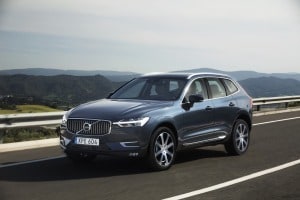Rising Gas Prices Not A Risk To Auto Sales Yet

Gas prices increased $0.20 in the past four weeks, driven in large part by a growing fear that developing Middle East tensions will result in a substantial supply disruption—namely, that Iran could limit passage through the Strait of Hormuz through which 20 percent of the world's oil travels. Even with these increases, at $3.65 per gallon on average nationwide for all grades, gas prices remain below recent weekly highs of $4.17 in July 2008 and $4.02 in May 2011. But, some analysts are warning that gas prices could rise as high as $5.00 by summer, threatening the still vulnerable economic recovery and thus the auto sales recovery as well. Such assessments overlook a number of factors that indicate that auto sales momentum could prevail through a bout of higher gas prices—at least for this year. For example, consumer reactions to past temporary gas price increases, the current state of the economy, other sources of oil supply, and the strength of pent-up demand all have the potential to support auto sales even if gas prices rise. Here are five key reasons why auto sales strength should continue.
1. Past Consumer Reactions: Multiple studies of consumer behavior show that when gas prices rise, consumers initially change their driving behavior, decreasing discretionary driving. This response should ease pressure on consumer budgets from higher gas prices. Consumers also react by changing what kinds of vehicles they purchase, shifting to smaller, more fuel-efficient vehicles, especially if gas prices increase rapidly over a short period. Consumers are more likely to buy a less expensive vehicle and/or a vehicle with lower fuel costs than to not buy at all. In the past month, consumers have in fact cut back on driving, with purchases down nearly 6 percent according to MasterCard's SpendingPulse report. Edmunds.com data shows that consumer interest in small cars has increased as well. Auto sales, in contrast, remain strong with February sales forecasted to be higher than January sales.

2. Temporary Shocks/Temporary Reactions: The impact of rising gas prices on auto sales also depends on the nature of the price shock. Gas price spikes over the past five years led to very temporary changes in behavior—in large part because the price increases themselves tended to be fairly short-lived. Share gains for small cars stalled and then reversed as soon as gas prices stabilized or began to retreat. This consumer tendency to revert to larger, less fuel-efficient vehicle purchases indicates that consumers either adjusted to higher gas prices or ceased to believe that prices would remain elevated. In either case, any "lost" sales during the period of higher gas prices are likely to have been made up once consumers stopped reacting to gas prices. Since the current price increases appear to be driven more by the fear of a supply shortage than by actual changes in supply or demand, prices are likely to ease when it appears that a crisis will be averted.
3. Permanent Shocks Are Unlikely: A key concern over rising fuel prices at this time is that they will impede the economic recovery or, worse, trigger another recession—either of which could substantially disrupt the auto sales recovery. Rising oil and gas prices preceded numerous past recessions, including in the 1970s, 1990, and 2001. The ability of fuel prices to disrupt economic growth depends in part on whether prices rise gradually or suddenly. The economic climate—especially the levels of interest rates and inflation—also plays a role since with lower interest rates and inflation, consumers are better able to absorb the price increases and the government may be able to help through monetary policy. As a result, sudden increases in oil prices that are permanent may slow growth if interest rates and inflation are low but are only likely to trigger a recession if inflation and interest rates are already high. This is clearly not the case today, when core inflation is moderate and interest rates are at historic lows. In any case, a sudden shock today is unlikely to be permanent because it is not in the interest of Iran to cut its oil exports for any length of time and because higher prices will trigger the release of additional supply by other producers. Plus, any decrease in demand for gasoline (for example, due to decreased driving or due to more fuel efficient cars on the road) will soften prices.
4. A Soft Landing Is Likely: Another reason why a fuel price shock is unlikely to substantially lower auto sales is that there are multiple factors that could soften the blow of such a shock. On the supply side, additional oil could become available in the market from the release of reserves held by individual countries (the U.S. itself has approximately a 35 day supply of oil in its Strategic Petroleum Reserve) and/or increased production from oil producers with excess capacity (Saudi Arabia is one potential candidate). Plus, supply is not tight right now anyway due to overproduction by OPEC in recent months. Gasoline inventories are at a ten-year high. If additional supply can become available quickly enough, oil and gas prices will drop again. On the demand side, consumers also have at least a couple of tricks to ease the pain at the pump, besides driving less. Improvements in fuel efficiency mean demand for gasoline is lower, especially for new cars. And, the recently extended payroll tax cut will result in an additional $1,000 in take-home pay for the average family, which can help cover the higher cost of gasoline purchases.
5. This is not 2008—or even 2011: Recent history appears to lend support to the negative impact of rising gas prices on the economy and on auto sales but other factors were in play during these episodes. When gas prices spiked in 2008, the economy was already heading into a recession due to the financial crisis. In 2011, the effects of the Japanese earthquake on the auto industry (and on the broader economy) cannot be ignored. In contrast, the current economic environment contains numerous signs of increasing strength. Auto sales also are enjoying new strength due to the release of pent-up demand. Consumers are motivated to buy new cars due to aging vehicles, recession weariness, greater access to credit and a renewed supply as the industry recovers from last year's earthquake. And, while higher gas prices in recent months could mean consumers are less affected psychologically by gas price increases today, improved fuel efficiency means they are also less affected financially. Plus, consumer reactions to higher gas prices in 2011 show that at least some lessons were learned from 2008—namely, that consumers did not panic and rush to trade-in large SUVs for small compact cars without fully considering their passenger and cargo requirements.
The above five reasons suggest a more tempered view of the effects of a potential gas price shock. That is not to say that there is no risk that consumer budgets could be squeezed enough that their ability to buy a new car will be eroded. This is a risk; but, the force of pent-up demand is a strong counter-weight against this possibility, aided by expanding access to credit. And, again, history shows that budget-constrained consumers may shift what they buy—opting for vehicles that are cheaper, have fewer options and/or are more fuel efficient—but are less likely to not buy a new car at all.
Lacey Plache is the Chief Economist for Edmunds.com. Follow @AutoEconomist on Twitter.





